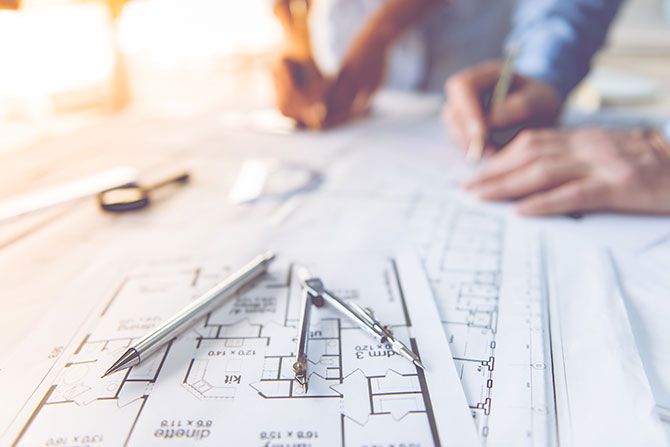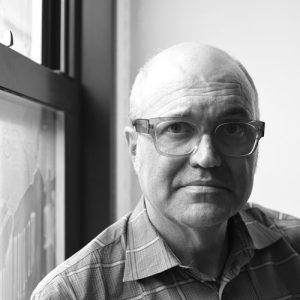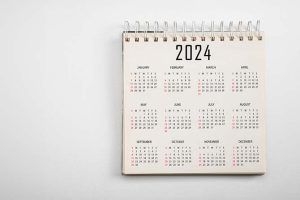At first, I wasn’t buying it. When AIA Maine adopted the AIA Framework for Design Excellence (F4DE) as part of our design awards program in 2019, shortly after the Framework was released, I was concerned that it would reduce the number of entries we receive each year and become a barrier.
I have always considered myself to be a “green” architect. I was an early LEED-accredited professional and worked on many Net Zero projects. I didn’t understand the F4DE; I thought it would be complicated to comply with, take away time I didn’t have and strongarm itself onto my clients.
F4DE is NOT a tool for green shaming. The Framework seeks to inform progress toward a zero-carbon, equitable, resilient and healthy built environment. As a toolkit or checklist, it provides a set of principles that guide us, as architects, towards better design regardless of the project size, scope or sustainability goals.
I was wrong. As I continue to learn about the framework, I’ve seen how it isn’t only a tool for measuring a project against similar projects. It provides a robust checklist of thought-starters that can be utilized throughout the course of a project, from pre-design through post-occupancy evaluations.
The Framework
The F4DE is a set of 10 principles. Design for: Integration, Equitable Communities, Ecosystems, Water, Economy, Energy, Well-Being, Resources, Change and Discovery. The 10 principles are organized around four outcomes or areas of impact: Zero carbon, Equitable, Resilient and Healthy. Many of the suggestions in the principles are things that we may already be doing — designing for daylight, specifying environmentally friendly materials, or providing universal access.
The AIA website has an excellent description and ample information on each principle, as well as links to external resources. I encourage you to visit it by scanning the QR code, especially the section on “If you can do only one (or a few) thing(s),” which lists some of the most impactful and easy things to consider.
https://www.aia.org/resources/6077668-framework-for-design-excellence
My studio is small, with four full-time staff and four part-time. We are based in Portland, Maine. We utilize the F4DE in our projects. We recently applied it to projects in concept design, construction and post-occupancy. After sharing the Framework with a new client and preparing a graphic description of the process, I was amazed at the positive reaction we received. The document is a goal sheet for the project. We discussed how we may not achieve all of the goals but that it was important to discuss possibilities.
Below, I list each of the Principles and some of the aspects of each that we use in our work.
- Design for Integration
Getting client input and allowing people to be heard is crucial to a project’s success. BuildingGreen.com has an excellent article on “How to Run a Great Workshop” that you can read by visiting the link below.
https://www.buildinggreen.com/feature/how-run-great-workshop-37-tips-and-ideas
In it, they give tips for preventing design by committee, the timing of meetings, gaining value for disagreeable people and supporting iteration. With 37 tips, it is an exhaustive set of helpful tips for client integration.
- Design for Equitable Communities
Calculate your Walk Score with www.walkscore.com. Most realtors are using this website to quickly describe a location in terms of walkability, bike-ability and availability of public transportation. Remember, this is a tool of discovery and not shame. I’ve got projects that have a low score due to their location, near a highway or rural site. The walk score might be low, but going through the process has caused me to think about equitability and prompted me to discuss things with the client, like providing a shuttle or organizing carpools for employees.
- Design for Ecosystems
There are so many possibilities in designing for ecosystems, but one that is near and dear to me is bird safety. With over a billion bird strikes each year, designing bird-safe glazing is very important. Especially in community-based projects, no one feels good after hearing that awful thump of a bird crashing into a window. Skyline Design is one manufacturer of bird-safe patterns on glass, but they also have published an excellent article on it that you can visit the link below.
https://skydesign.com/news/bird-safe-glass-for-architecture/
- Design for Water
Managing water usage and runoff should be a discussion topic with your client. Specifying low-flow fixtures is required by most codes. Thinking about site draining is another water discussion. On one of our projects, we are working with the local watershed authority to receive grants for replacing asphalt paving with permeable paving. This will allow for more filtration of runoff.
- Design for Economy
There are several questions to ask here. Can we reuse a building and renovate it instead of building new? Can we specify local materials and support local industries? Is the building we are designing right-sized for the program? How long will this building be in use?
Asking these questions and others can help us to bring value to our buildings. None of these questions are difficult to discuss with a client at the start of a project.
- Design for Energy
This principle can easily become a deep dive into energy modeling and EUI (Energy Use Index) calculations. But we can also consider energy by thinking about passive energy strategies, asking what the available power sources are or designing an all-electric building that can take advantage of future electric power sources.
- Design for Well-Being
One way to design a healthy building is to eliminate harmful chemicals present in many building products. Declare describes itself as the nutrition label for products. Developed by the International Living Future Institute, Declare is a rating system for products related to how many or how few Red-List chemicals a product contains. The Red List represents the worst in-class materials, chemicals and elements known. Specifying Red-List-free products is becoming easier and easier to do thanks to many manufacturers working to have their products labeled. Learn more at living-future.org/declare/basics/.
- Design for Resources
Carbon. There is a lot of discussion about carbon. When designing a building, consider materials that sequester carbon. Wood is an obvious choice. Mass timber building is very popular here in the Northeastern United States. But other bio-based materials like hemp, bamboo and straw are faster renewing than wood and provide even greater opportunity for sequestering carbon. Hempitecture (www.hempitecture.com) makes a number of hemp-based insulation products — including panels and batts.
- Design for Change
Resilience. We discuss resilience a lot. Designing buildings that last makes sense. By doing this, we are making the most of the materials we specify. Global warming has increased the number of disasters we face. If you are designing public buildings, ask if they are intended to be a shelter. Assess how your building will respond to flooding, hurricanes or tornadoes. And also consider the future use of the building or how it might be dismantled after its useful life.
- Design for Discovery
Another multi-faceted principle. Think about how, during the process of designing a building, you develop a relationship with the client, contractor and local officials and how those relationships will potentially make you a better design professional. Despite all advances in technology and construction methods, I believe the business of architecture is still relationship-based.
Don’t forget post-occupancy evaluations. They further the relationships developed, provide lessons learned and cement the learning we have achieved.
Lastly, how can your design promote delight? Ben Channon, author of The Happy Design Toolkit, writes about how the initial sense of awe and joy produced when entering a well-designed building can create a lasting positive feeling in people.
Utilizing the Framework for Design Excellence has been a game changer for my practice. It wasn’t difficult to start using it, but we still have a lot to learn about the myriad aspects the Framework presents. It is a great checklist that reminds us of things we usually think about and opens our minds to consider what more we can do to design excellent buildings.









